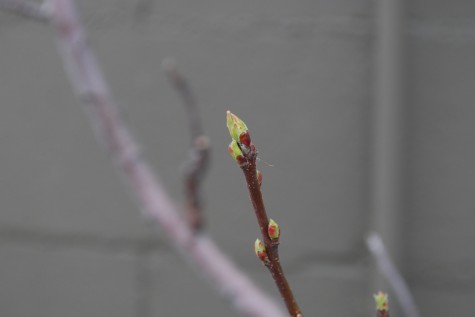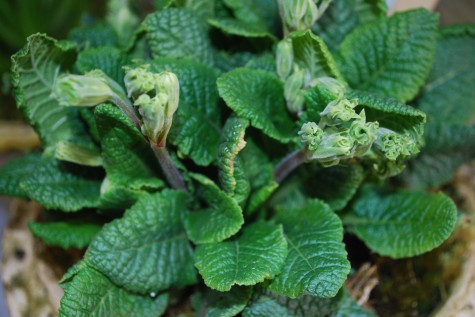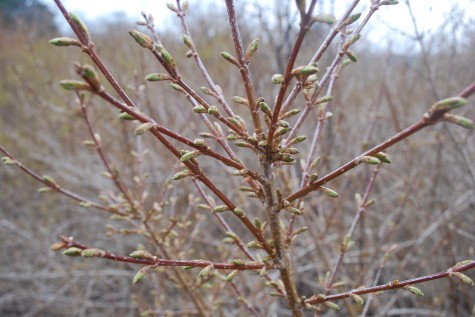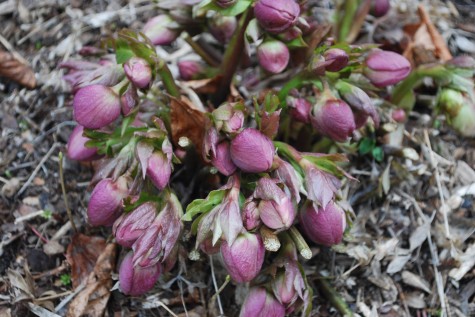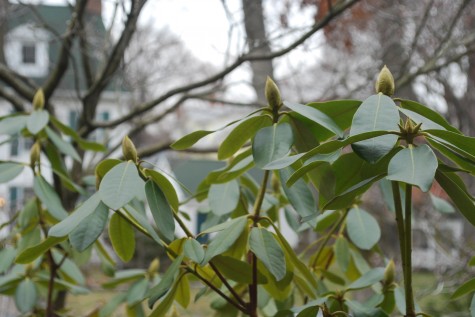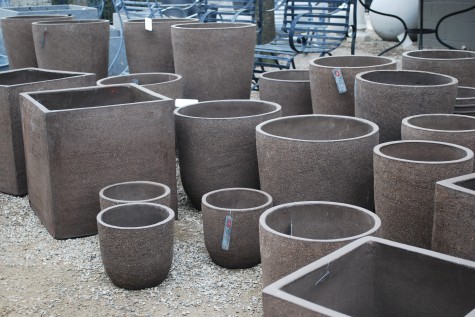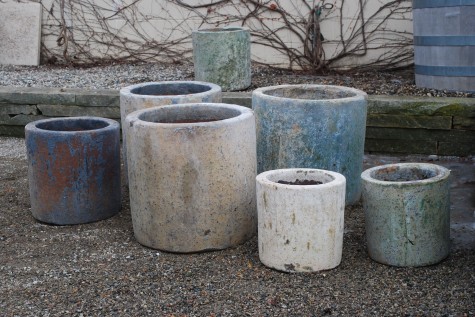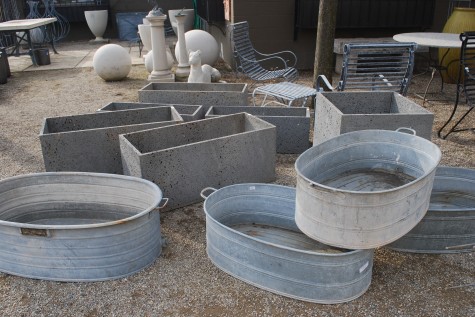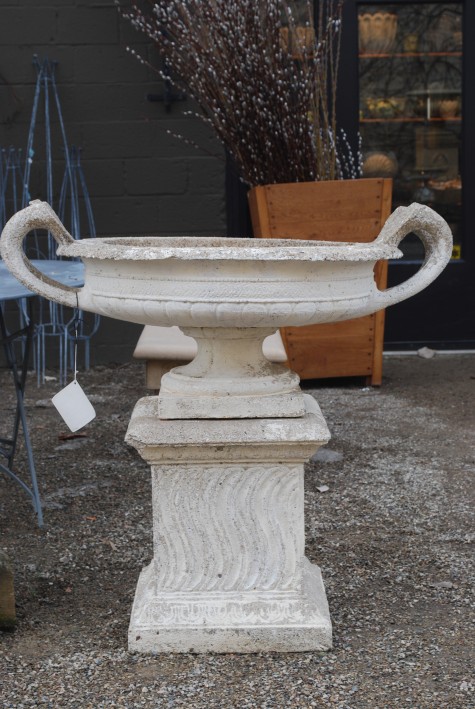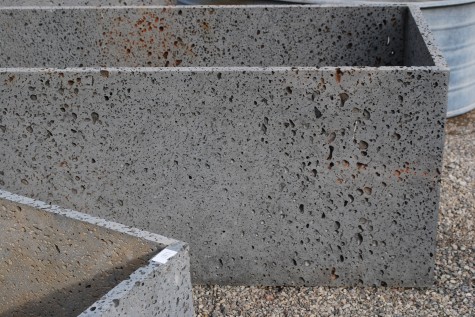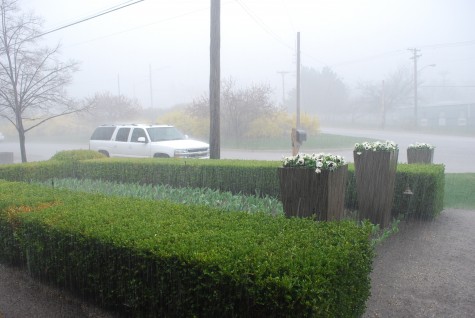 I have been wringing my hands all week over heavy rains, wind and hail that are to be followed by 30 degrees overnight, tonight. I have tulips already budded, Galaxy magnolias showing color and ready to pop, hellebores in full bloom-not to mention my star magnolia. As I write, those fluttery petals are drooping from the cold and wind. A few flowers on my PJM rhododendrons are out-this is very early. The early spring weather has been very warm- warm enough to make me nervous about the possibility of an untoward frost. That possibility is looking really good right now. The maples in the neighborhood just started blooming two days ago. Those masses of tiny chartreuse flowers against a china blue spring sky-one of my favorite spring moments. What will happen?
I have been wringing my hands all week over heavy rains, wind and hail that are to be followed by 30 degrees overnight, tonight. I have tulips already budded, Galaxy magnolias showing color and ready to pop, hellebores in full bloom-not to mention my star magnolia. As I write, those fluttery petals are drooping from the cold and wind. A few flowers on my PJM rhododendrons are out-this is very early. The early spring weather has been very warm- warm enough to make me nervous about the possibility of an untoward frost. That possibility is looking really good right now. The maples in the neighborhood just started blooming two days ago. Those masses of tiny chartreuse flowers against a china blue spring sky-one of my favorite spring moments. What will happen?
I cannot bear to think about the just emerging, dense and soft growth on my magnificent katsura espaliers. They have only been out of their black semi-truck box for two days, after a weeks trip from the West Coast. How will those leaves react to freezing temperatures? I shudder to think. I cannot do a thing about those katsuras, but I can move as much else as possible into the garage. Nature invariably plays hardball with serious gardeners. We people seem to think our extenuating circumstances should count for something, and mitigate the natural course of events. I have had clients who think the weather does not apply to them or their gardens. Sometimes I have to gently remind them sometimes that no one has made me President of the weather. Nature is all about variability; many plants have built in mechanisms to deal with that big fluid situation. Some seeds will not germinate, unless there has been a burn. Some trees have enough stored energy to re-leaf, given an epic disaster. But a hard freeze to new soft growth-this can be unforgiving.
Weather disasters are tough to take-my star magnolia only blooms once every twelve months; I am watching it fade before its time. The wet weather last summer wrecked tomato harvests for many gardeners. Though I am not a vegetable gardener, I was sympathetic. I am intimately acquainted with the sheer exasperation which comes from not being in charge of the weather. I can plan all I want, but being ready to endure what is not part of your best laid plans is a given, should you garden.
Plants are covered with moisture overnight. Frost protection is an effort to keep the moisture on the surface of leaves or buds from freezing. Covering plants before the end of the day helps trap heat-and help keep that moisture liquid. Should that moisture on plant leaves or buds freeze, it will reduce the tissue to black mush; every gardener knows what frost damage looks like. That mush look is chasing me-we spent the day hauling plants inside. Very hard frosts can freeze leaf cells; this damage is the worst.
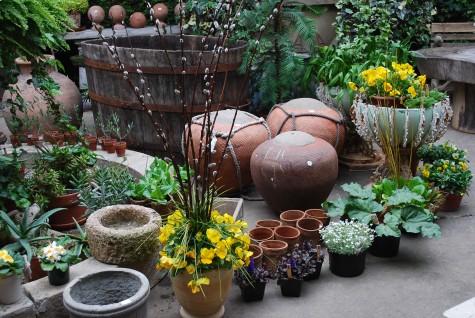 The greenhouse room is stuffed; just about every square inch is loaded with spring plants. I should be happy I have indoor space. After I move past the be grateful thought, I wish I could float frost cover over my gardening world. As that wish is not about to be fulfilled anytime soon, I can only hope for the best.
The greenhouse room is stuffed; just about every square inch is loaded with spring plants. I should be happy I have indoor space. After I move past the be grateful thought, I wish I could float frost cover over my gardening world. As that wish is not about to be fulfilled anytime soon, I can only hope for the best.
 Lots of spring plants are very cold hardy. But once they have become accustomed to warmer weather, and push new soft growth, they are vulnerable to precipitous temperature drops. Gardeners who germinate plants from seeds indoors are bound to the ritual of hardening off. Shocking plants with any abrupt change can make them very mad-or kill them. Though you might think nature invented fall for the great visuals, a long and slow fall cooling period prepares plants for the deep freeze. Should summer ever turn on a dime into winter, there would be terrible losses. The transitional weather we call fall and spring can be brutal for plants and gardeners.
Lots of spring plants are very cold hardy. But once they have become accustomed to warmer weather, and push new soft growth, they are vulnerable to precipitous temperature drops. Gardeners who germinate plants from seeds indoors are bound to the ritual of hardening off. Shocking plants with any abrupt change can make them very mad-or kill them. Though you might think nature invented fall for the great visuals, a long and slow fall cooling period prepares plants for the deep freeze. Should summer ever turn on a dime into winter, there would be terrible losses. The transitional weather we call fall and spring can be brutal for plants and gardeners.
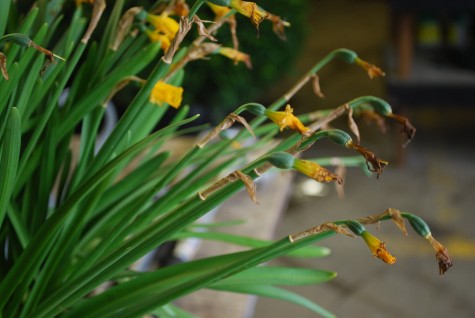
These early mini daffodils closed up shop in last night’s 32 degrees. My crocus came and went so fast, I wondered if I had imagined them blooming. I will not sleep so good, but I will get up and keep gardening.



